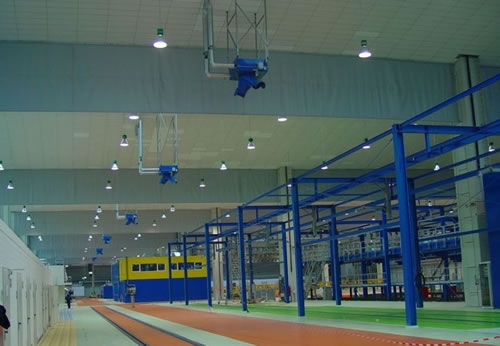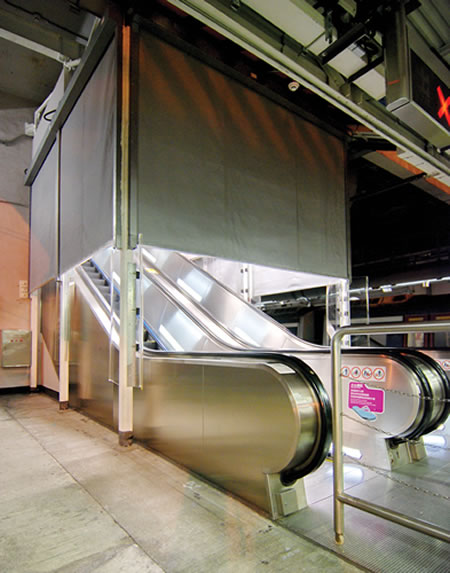Differences between Smoke curtains and Fire curtains
A Fire Curtain and a Smoke Curtain are similar in appearance and operation, but they have different functions.
A smoke curtain is used as part of a smoke control system. It is there to either stop smoke from reaching another zone or channel it through a particular route. Smoke Curtains don’t descend to ground level (ceiling to floor). They are generally set above head height, so as not to interfere with the means of escape.

A fire curtain, on the other hand, is used to provide fire separation between two spaces. It may provide smoke control, but that is not its primary purpose, which is to prevent the spread of fire. It typically may be used to protect an open stairway or to prevent fire moving from one floor to another, through an open atrium.
Fire Curtains are required to provide two main functions:
- To maintain any compartmentation of buildings needed to limit the spread of fire and smoke;
- To allow access to protected escape routes, both vertical and horizontal, without any loss of fire resistance, and to limit smoke entry into these routes, i.e., protected corridors and protected shafts.

Performance of Smoke and Fire curtains
In terms of its performance, a smoke curtain is expected only to be exposed to smoke because it has a fire rating of 1112°F. On the other hand, a fire curtain may be exposed to the fire itself, and fire temperatures can be a lot higher. So, the curtain needs to be more robust. The fire curtain is fire rated against the standard ISO fire curve, which exceeds 1800°F.
If you try to use a smoke curtain in an application where a fire curtain is needed, the smoke curtain will not be robust enough to withstand the fire temperatures.
Smoke curtains and fire curtains have significant
differences and are not interchangeable.
It is crucial to be sure about which one is needed and to specify it accurately. In other words, fire curtains restrict the spread of fire, and smoke curtains only limit the spread of smoke, and this is a significant difference.
Both products form an essential part of the building’s fire safety strategy, and they must be appropriately applied and maintained once they are in place.

